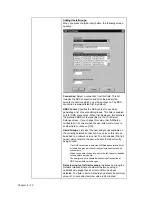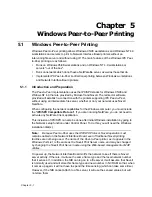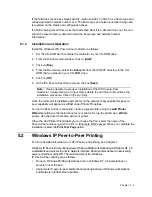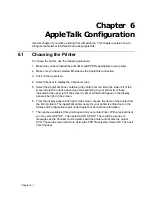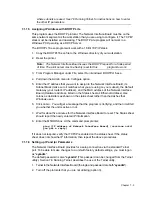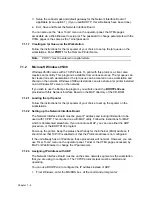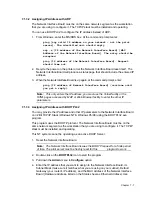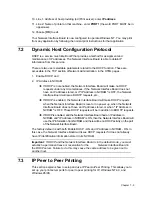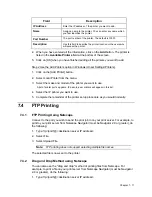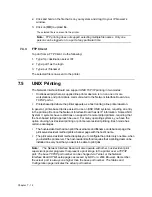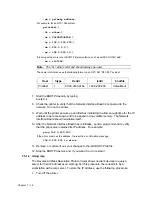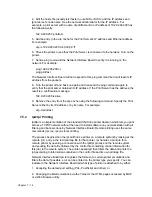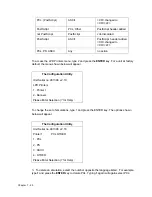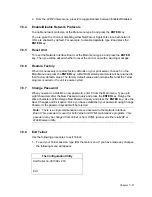
Chapter
7 - 6
8.
When you get a response that your unit is active, you should be able to ping and
Telnet to the Network Interface Board.
7.1.2.5 Setting up IP and lpr Parameters
The Network Interface Board provides for a setup connection via the standard Telnet port. To
be able to make changes to a unit at factory default settings, you must logon as sysadm. The
default password is also "sysadm". (This password can be changed from the Telnet utility.)
See 7.6 Running Telnet, for instructions on using Telnet.
1.
Telnet to the Network Interface Board (the login and password are both "sysadm").
2.
Turn off the protocols that you are not utilizing (option 3).
3.
Setup the subnet mask and default gateway for the Network Interface Board if
applicable (option 1).
4.
Exit, Save, and Reset the Network Interface Board.
You can also use the HTML pages accessible via MAP or a Web Browser to set up lpr.
The password to change parameters with the HTML pages is the same as the Telnet
password.
7.1.2.6 Setting up lpr on the Workstation
Follow the instructions for the lpr spooler of your choice to set up the lpr queue on the
workstations. Enter PORT1 for the Remote Printer Name.
Note:
PORT1 must be entered in capital letters.
7.1.3
Windows NT Instructions
Windows NT (version 3.5 or higher) does come with TCP/IP and lpr capabilities, although
these must be installed when the unit is configured. You must install the TCP/IP Protocol,
Simple TCP/IP Services, and Microsoft TCP/IP Printing prior to entering the network
printer on the workstation.
Note:
Once you have lpr installed on a Windows NT workstation and have allowed
printer sharing, other workstations may use the printer through the Microsoft Windows
Network without having to have separate lpr queues installed on each workstation. If
you wish to use BOOTPL32, you will need the BOOTPL32.exe file. This file is on the
MAP directory of the CD-ROM supplied with the Network Interface Board.
7.1.3.1 Setting Up the Network Interface Board
The Network Interface Board must be given an IP address and routing information to be
used with TCP/IP. This can be done with either the ARP procedure or the BOOTPL32
program.
Power-up the printer. Keep the status sheet handy for the Ethernet (MAC) address. It
should show that TCP/IP is enabled but that the Protocol address is not configured.
If the unit already has an IP address, these procedures will not work. However, you can
TELNET to the unit to change the IP parameters.
Summary of Contents for NIB 450-E
Page 3: ......
Page 8: ......
Page 14: ......
Page 18: ......
Page 40: ......
Page 44: ......
Page 46: ......
Page 86: ...2 ...
Page 106: ...Dynamic Host Configuration Protocol DHCP 22 4 ...
Page 112: ...Windows NT Configuration 28 5 ...
Page 118: ...34 UE USA A855 ...
Page 119: ...Copyright 1998 ...

